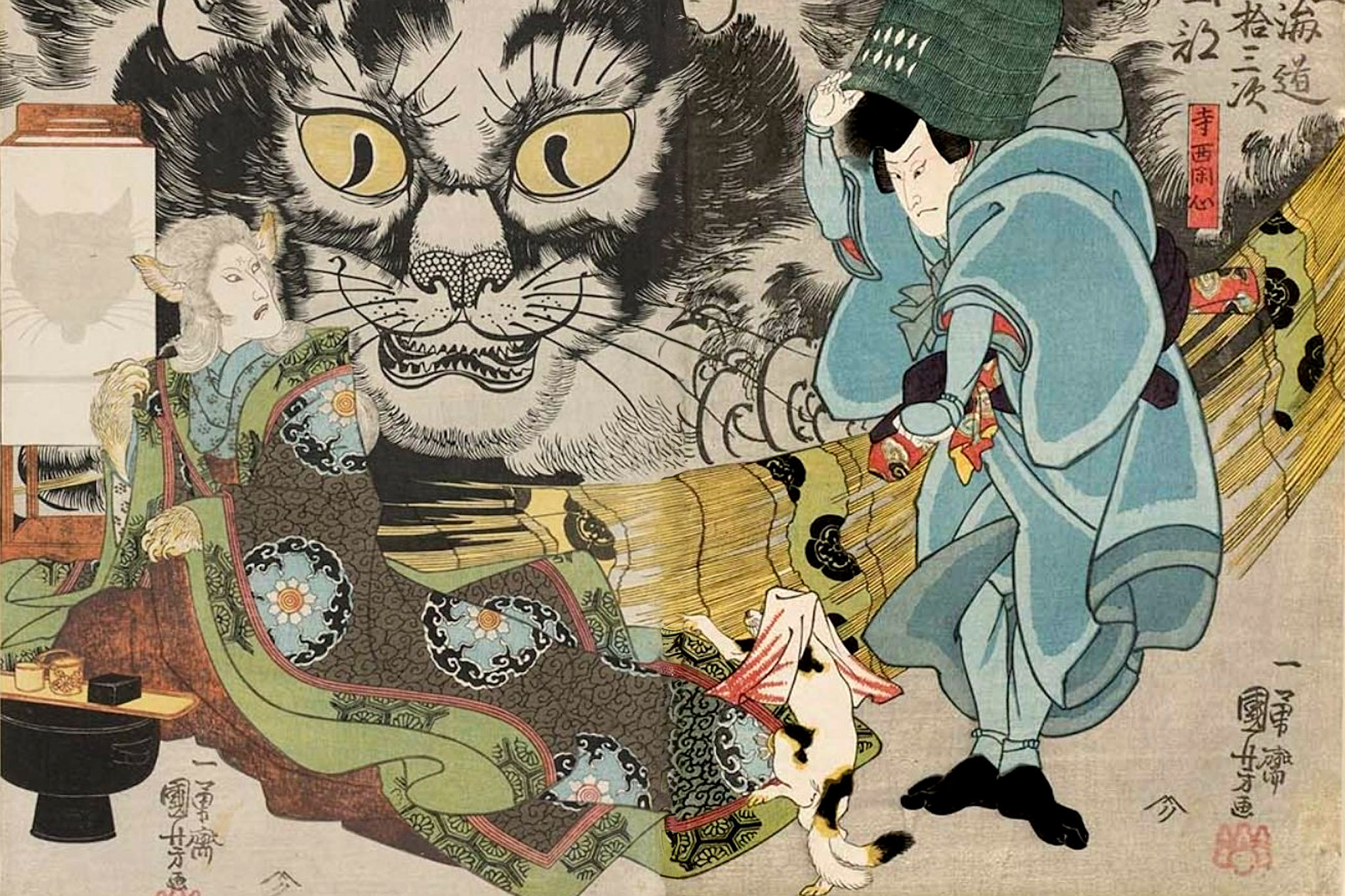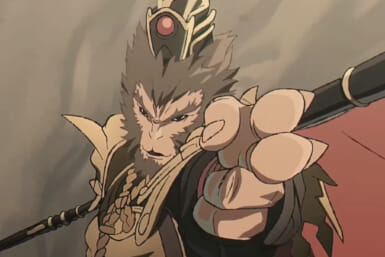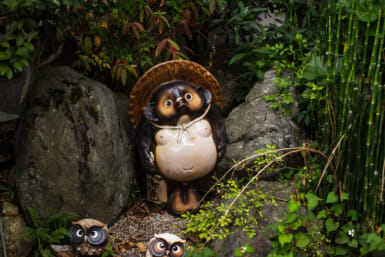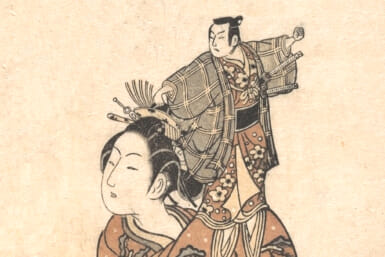Mention Japanese witches and the first name that will come to mind for many is Kiki from Hayao Miyazaki’s hugely popular animated film Kiki’s Delivery Service. With Jiji in tow, she’s the picture-perfect image of a witch. That being said, the history of witchcraft in Japan runs far deeper than broomsticks and bakeries.
Cat Witches
It’s not uncommon for witches to have a feline friend to assist in their evil doings. Where would Sabrina have been without Salem’s sardonic interjections? The case is slightly different for Japanese witches: the boundary between master and assistant is often blurred. Depicted with uncanny menace in Utagawa Kunisada’s ukiyo-e portraits, “cat witches” recur frequently throughout Japanese folklore. According to legend, these terrifying bakeneko — literally meaning “changed cat” — would shapeshift from cat to woman, deploying their (often seductive) human form to lure unsuspecting passers-by to their lairs, usually with nefarious intentions.
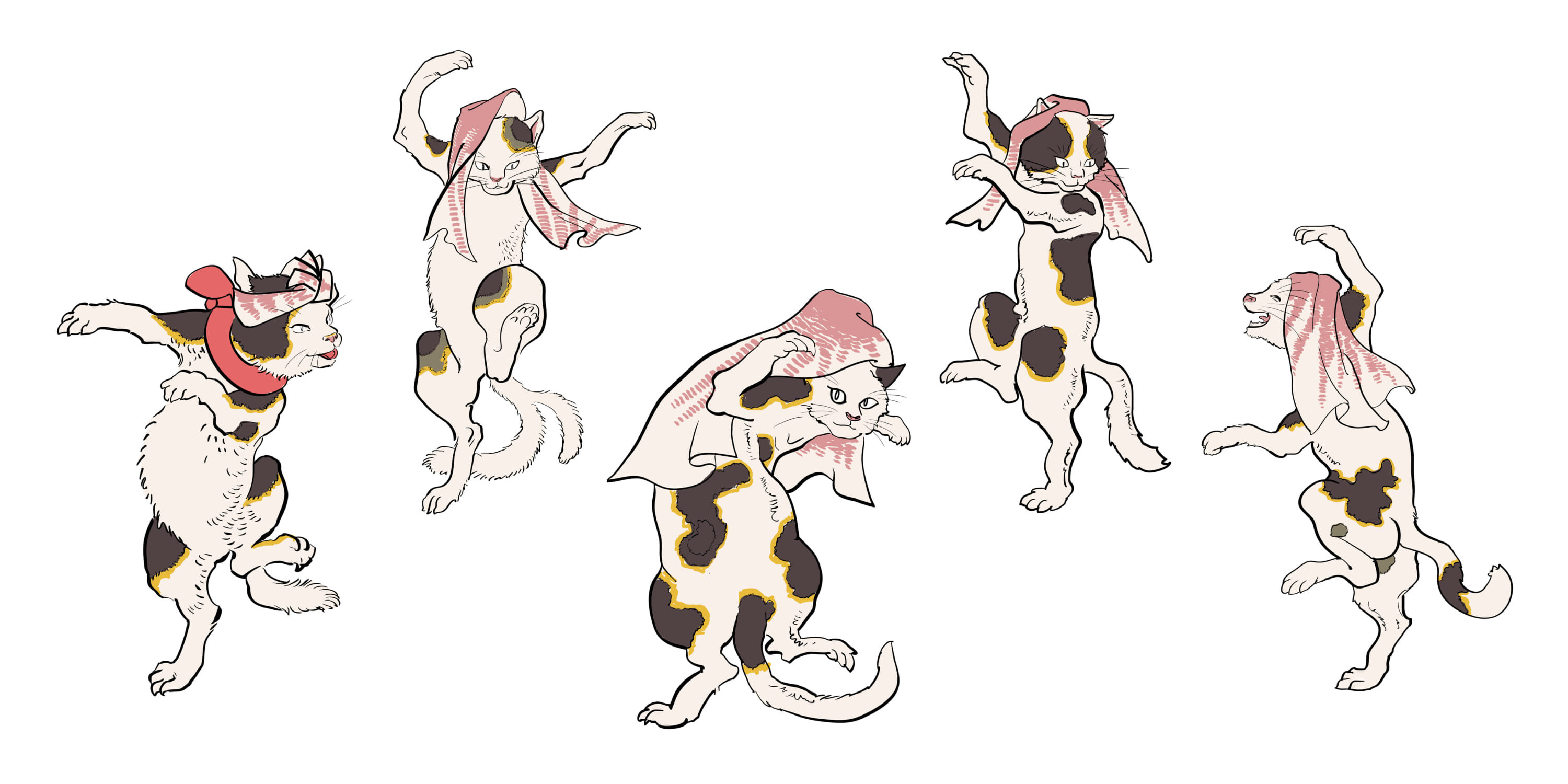
The Cat Witch of Okazaki
A particularly infamous story is that of “The Cat Witch of Okazaki.” In this tale, three travelers stop at a temple on their way back from a pilgrimage, after a seemingly hospitable woman offers them lodging for the night. During the course of the evening, the travelers are somewhat perturbed when they notice two cats dancing around on their hind legs. Their host, Osan, assures them that there is no reason to be alarmed.
Later on, however, one of the travelers catches sight of Osan’s shadow against the wall. Rather than that of an old lady, the silhouette on the wall takes the form of a human-sized cat. Too little, too late, the traveler comes to realize that they are in the presence of a bakeneko. Only that one traveler makes it out alive. The others are discovered later, mauled to death by mysterious scratches.
The Cat Witch of Okabe
A cat-witch is also rumored to have haunted the temple grounds in the town of Okabe. Here, the bakeneko would similarly transform herself into an old woman to coax unwitting young ladies into her lair. Once in her possession, she would feast on these women as tasty treats — a gruesome inversion of today’s Halloween ritual.
It was believed that because the soul of this bakeneko was so deadly rotten, when her human form eventually died, the corpse turned to stone. The exact location of this story, though, is unclear. Towns called Okabe can be found in both Shizuoka and Saitama prefectures. Consequently, the whereabouts of both the stone statue and the corpse of this deadly creature are unknown.
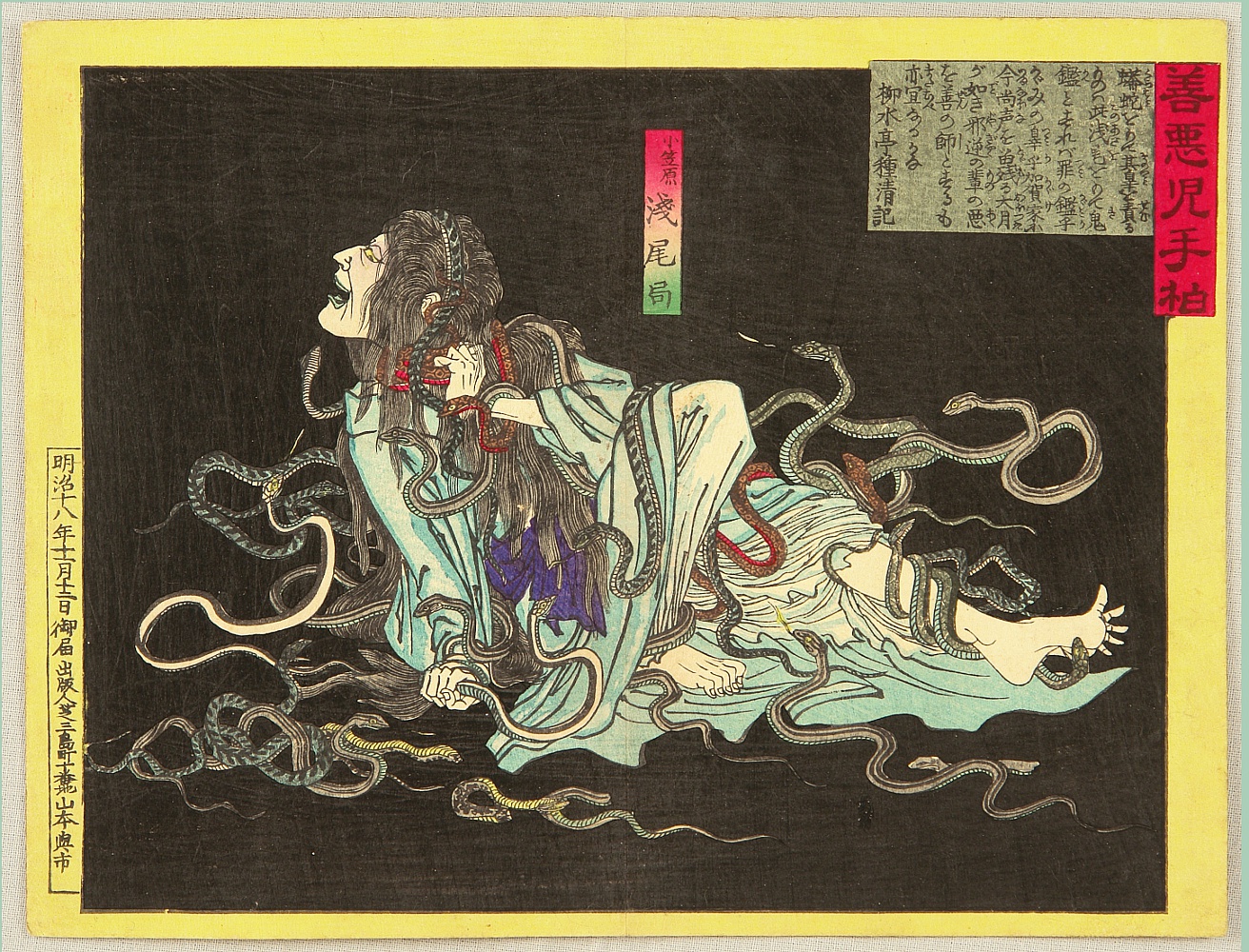
Cannot Separate Good and Evil – Snake Pit by Adachi Ginko
Snake Witches
Cats aren’t the only creatures associated with witches in Japanese folklore. Both snakes and foxes have also been linked to sorcery, with most of the snake witch-related yokai originating in Shikoku. The story of Jakotsu Baba, or, more catchily, the “snake-bone old hag,” is particularly infamous. She resided with her husband, Jakoemon, “The Five Snake Emon,” in a snake mound. Both were able to control and manipulate their reptilian friends to do their evil bidding.
Jakotsu Baba is often depicted with a blue snake in her right hand and a red snake in her left. She appeared in kabuki plays throughout the 1760s and 1770s. Her legacy can still be seen today, as she appears in the popular anime GeGeGe no Kitaro and shades of Baba can also be detected in Benisato’s character in Ninja Scroll. It is important to note, though, that Jakotsu Baba’s name has also been used as a vulgar term for an old woman.
Fox Witches
We come next to the fox witch. Often portrayed as something of a trickster in European fairy tales and fables, the fox incites an even greater degree of dread in Eastern folklore. Historically, in some communities in Japan, the word for fox — kitsune — wouldn’t even be uttered past sundown, for fear of unwittingly summoning the fox-demon.
In certain parts of the country, particularly Izumo Province in Shimane Prefecture, there were believed to be members of society capable of commanding these creatures, known as kitsune-mochi. These fox-sorcerers, as they were sometimes called, would strike deals with foxes related to food or daily care. The witches could then use the foxes’ magical powers for protection, and to carry out various forms of ill-doing.
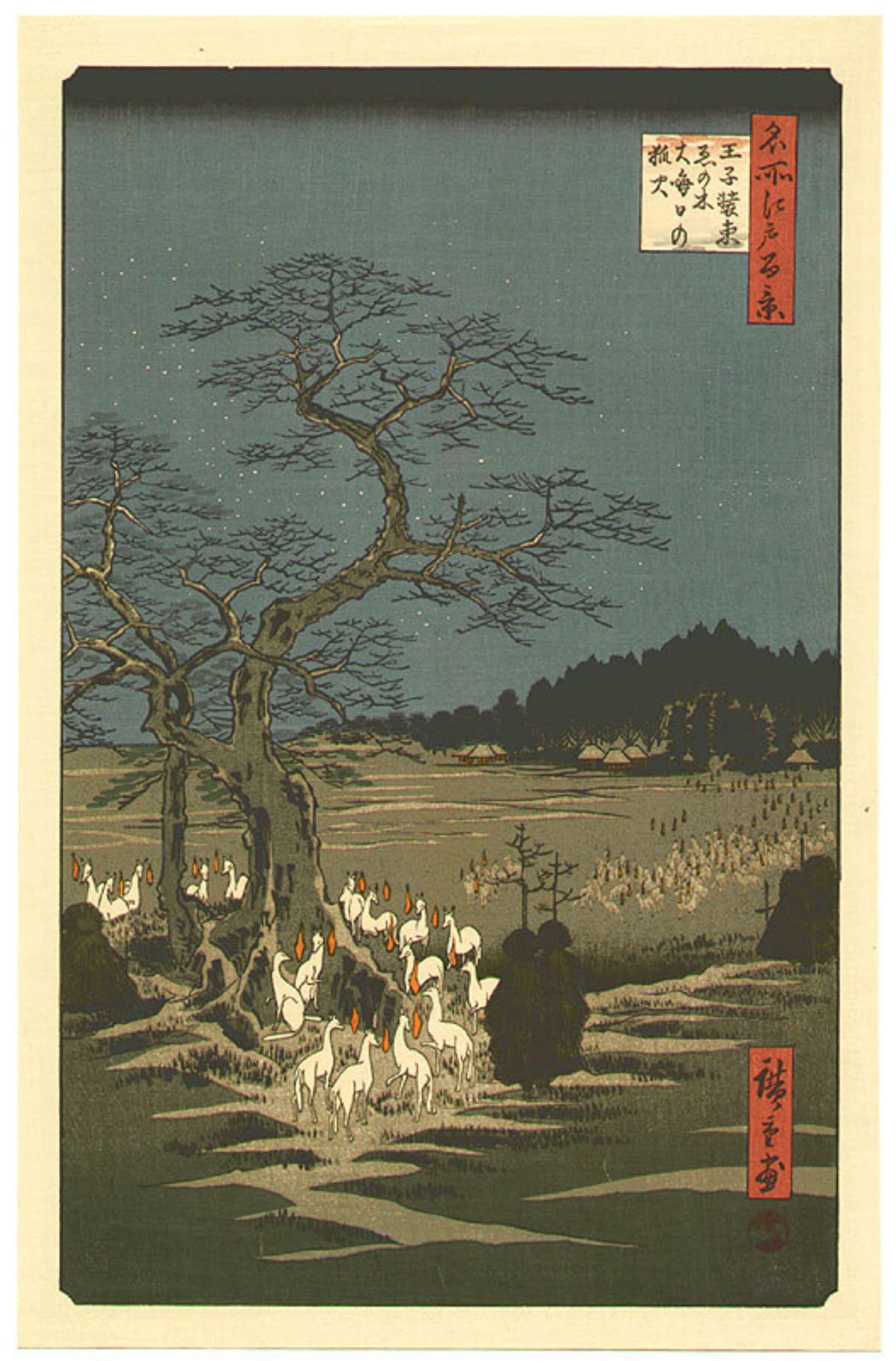
Fox-fires on New Year’s Eve at Shozoku Enoki by Utagawa Hiroshige
Okinawan Yuta Witches
The belief in witches and sorcery in Japan is not something that has been completely eradicated over the course of time. In Okinawa, there remains the presence of yuta. These are individuals who are said to have been “awakened to their own psychic and spiritual abilities.” They serve as spiritual guides to whoever seeks their assistance. Some believe yuta can communicate with the dead and ward off evil spirits.
In the past, the government of the Ryukyu Islands attributed cases of unsolved murders to these women. They were accused of summoning spirits to kill. Once convicted, the yuta were paraded in shame around their respective villages, before suffering exile. Some were even beheaded. Despite this crackdown, their presence is still felt today. As recently as 2009, there were estimated to be some 5,000 yuta still practicing in Okinawa and the Amami Islands.

